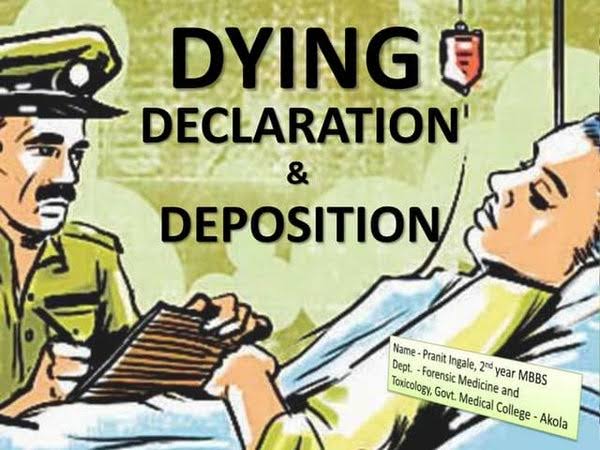S.H. Kapadia, J.@mdashFor the assessment year 1979-80, the Department has come by way of reference u/s 256(1) of the Income Tax Act, 1961, for our opinion on the question quoted hereinbelow :
"Whether, on the facts and in the circumstances of the case, the Tribunal was right in law in holding that the surplus realised on the sale of land shall be treated as long-term capital gains and the surplus on the sale of building shall be treated as short-term capital gain ?"
Facts :
2. Some time during the accounting year ending December, 1975, the assessee purchased a plot of land admeasuring 3,930 sq. yards at Friends Colony, New Delhi. In the next year, the assessee started construction of a bungalow as a residence for the assessee''s manager in New Delhi. On August 7, 1978, the assessee sold the entire property for Rs. 30,00,000. In the conveyance the price was allocated as follows ; for the land, it was Rs. 14,00,000 ; for the building, it was Rs. 9,00,000 and Rs. 7,00,000 was for the air-conditioning plant, equipment, installations and fixtures. The total consideration was Rs. 30,00,000. At this stage, it may be mentioned that out of the total area admeasuring 3,930 sq. yards, the built up area occupied by the bungalow/building was 1,235 sq. yards.
3. The assessee-Citibank is a non-resident company, engaged in banking business in India. On June 29, 1979, it submitted its return of income of Rs. 5,05,08,610. On September 21, 1981, the assessee submitted a revised return showing a total income of Rs. 5,03,03,660. As per annexure C filed with the return of income, the assessee-bank had returned a short-term capital gain of Rs. 26,242 on the sale of house property and a long-term capital gain of Rs. 4,87,913 on the sale of land. This working was not accepted by the Assessing Officer, who took the view that the house property had been constructed on the land and, therefore, the gain arising on a transfer resulted in short-term capital gains. According to the Assessing Officer, the entire gain arising to the assessee on the transfer represented short-term capital gain and, accordingly, the Assessing Officer computed short-term capital gain at Rs. 5,14,155. Being aggrieved by the decision of the Assessing Officer, the assessee carried the matter in appeal to the Commissioner (Appeals), who substantially confirmed the assessment order. Being aggrieved, the matter was carried in appeal to the Tribunal by the assessee, which took the view that in the present case the land was a distinct and separate capital asset vis-a-vis the building ; that the land was a long-term capital asset; that in India, the principle "dual ownership" was applicable ; that for the purposes of computation of capital gains, land and building were two separate and distinct assets and, therefore, profits arising from the sale of land was required to be considered as long-term capital gain whereas, profits arising from the sale of building was required to be considered as short-term capital gain. Being aggrieved by the decision of the Tribunal, the matter has come by way of reference at the behest of the Department.
Arguments :
4. Mr. R. V. Desai, learned senior counsel appearing on behalf of the Department, argued that after the construction of the building on the land, the house property became an inseparable asset. That, after construction of the building on the land, the house property became a new asset. That, it was not possible to bifurcate the capital gains as relatable to building separately or land separately and since the apportionment was not possible, the view of the Tribunal was not correct in law. According to learned counsel for the Department, the land and building are not sold separately but as one unit and, therefore, it is not possible to bifurcate the building and land as two separate units.
5. Mr. Mistry, learned counsel appearing on behalf of the assessee, on the other hand, contended that the Indian law recognises separate ownership of land and building and, therefore, it is possible to separate capital gains in two ; one relating to land and another relating to the building. Mr. Mistry placed reliance on the judgment of the Supreme Court in the case of Commissioner of Income Tax, Punjab, Jammu and Kashmir and Himachal Pradesh Vs. Alps Theatre, . He also placed reliance on the judgment of the Madras High Court in the case of Commissioner of Income Tax Vs. Dr. D.L. Ramachandra Rao, .
Findings :
6. Section 32 of the Income Tax Act, inter alia, lays down that in respect of depreciation of buildings, machinery, plant or furniture owned by the assessee and used for the purposes of business or profession, the assessee is entitled to deduction. In this case, we are concerned with the assessment year 1979-80. u/s 32(1)(ii), the assessee was entitled to deduction for depreciation in case of buildings, machinery, plant or furniture, etc. That deduction was to consist of a certain percentage on the written down value. Therefore, u/s 32, the assessee was entitled to depreciation only in respect of the buildings and not the land. In the case of Commissioner of Income Tax, Punjab, Jammu and Kashmir and Himachal Pradesh Vs. Alps Theatre, , it has been held that depreciation under the Income Tax Act was not allowable on the cost of the land on which the building is erected but only on the cost of the superstructure. In that matter, the assessee carried on the business as exhibitor of films. The Income Tax Officer initiated proceedings u/s 34(1)(b) of the Indian Income Tax Act, 1922, on the ground that in the original assessment depreciation was wrongly allowed on the entire cost of Rs. 85,091 shown as cost of the building which included Rs. 12,000 as cost of land. By order dated February 22, 1959, the Income Tax Officer recomputed the depreciation excluding the cost of land. Being aggrieved, the assessee appealed to the Appellate Assistant Commissioner (AAC), who upheld the order of the Income Tax Officer. The assessee carried the matter in appeal to the Tribunal which came to the conclusion that it is not possible to conceive of a building without a bottom. That, the word "building" included the land upon which the superstructure was constructed and, therefore, it was wrong on the part of the Department to exclude the value of the land upon which the superstructure was constructed. This finding of the Tribunal has been reversed by the Supreme Court which took the view that depreciation u/s 10(2)(vi) was not allowable on the cost of the land on which the building was erected. That, depreciation was allowable only on the cost of the superstructure. Hence, the assessee failed. Therefore, depreciation u/s 32(1) of the Income Tax Act, 1961, was allowable only on the cost of the superstructure and not on the cost of the land. Section 50 of the Income Tax Act, 1961, as it stood at the relevant time, relates to special provision for computing cost of acquisition in the case of depreciable assets. Since land is not a depreciable asset, Section 50 will not apply to the site on which the building is erected. Section 50, therefore, provides for determination of the cost of acquisition of a depreciable asset which in the present case is a superstructure on the site. Section 50 refers to the provisions of Section 48 which in term deals with mode of computation and deductions in respect of the income chargeable under the head "Capital gains". Section 48 states that such income shall be computed by deducting from the full value of the consideration received, the expenditure incurred wholly in connection with such transfer and the cost of acquisition of the capital asset as also the cost of improvement thereto. Section 43(6) defines the expression "written down value" to mean the actual cost to the assessee less depreciation actually allowed to him under the Act in the case of asset acquired before the previous year. Therefore, one has to read Section 50 which provides for determination of cost of the acquisition of the asset along with Section 43(6) and Section 48 of the Act. Therefore, to sum up, Section 48 read with Section 50 provides for computation of income chargeable under the head "Capital gains" whereas, Section 45 is the charging section and it states, inter alia, that any profits or gains arising from the transfer of a capital asset shall be chargeable to Income Tax under the head "Capital gains". It is well-settled that in the matter of capital gains, the charging Section 45 and the computation provisions under Sections 48 and 50, constitute one integrated code. That, the character of computation provisions bear direct relationship to the nature of the charge u/s 45 of the Income Tax Act. This point is important to decide the point at issue in this case because, without the computation provisions, the charge by itself u/s 45 cannot stand. Hence, bifurcation is necessary between the site and the building for the purposes of capital gains, Therefore, profits arising from the sale of site are required to be treated separately from profits arising from the sale of building. Now, in the present case, the assessee received Rs. 14,00,000 for land under the above conveyance as against the cost of Rs. 9,20,530 resulting in the capital gain of Rs. 4,79,470. According to the Department, this working is correct (see page 82 of the paper book). However, according to the Department, since the land was a part of the superstructure, the said amount of Rs. 4,79,470 was not a long-term capital gain but it was to be treated as short-term capital gain. This is the only issue which arises in this case. As stated above, this view of the Department is erroneous for two reasons. Firstly, u/s 32(1), no depreciation is admissible for land (see judgment of the Supreme Court in the case of Commissioner of Income Tax, Punjab, Jammu and Kashmir and Himachal Pradesh Vs. Alps Theatre, . Secondly, the department can assess the company to short-term capital gains only qua depreciable assets which in the present case is the superstructure erected on the site (see Section 41(2) of the Income Tax Act as it stood at the relevant time). For both the above reasons, we hold that in the present case, on the sale of land carried to the building vide conveyance dated August 7, 1978, the gain which accrued to the assessee was long-term capital gain and the Department was wrong in treating such gain as short-term capital gain. Our view is supported by the judgment of the Madras High Court in the case of Commissioner of Income Tax Vs. Dr. D.L. Ramachandra Rao, , which has taken the view that if the lands are held by the assessee for a period more than the period prescribed u/s 2(42A) of the Income Tax Act, 1961, viz., 36 months, then, it is not possible to say that by construction of the building thereon, the land which was a long term capital asset ceases to be such long-term capital asset. This is because, the land is an independent and identifiable capital asset, and it continues to remain so even after construction of the building thereon. We respectfully agree with the view taken by the Madras High Court in the above judgment.
Conclusion :
7. Accordingly, we answer the above question in the affirmative, i.e., in favour of the assessee and against the Department.
8. Accordingly, the reference is disposed of with no order as to costs.

